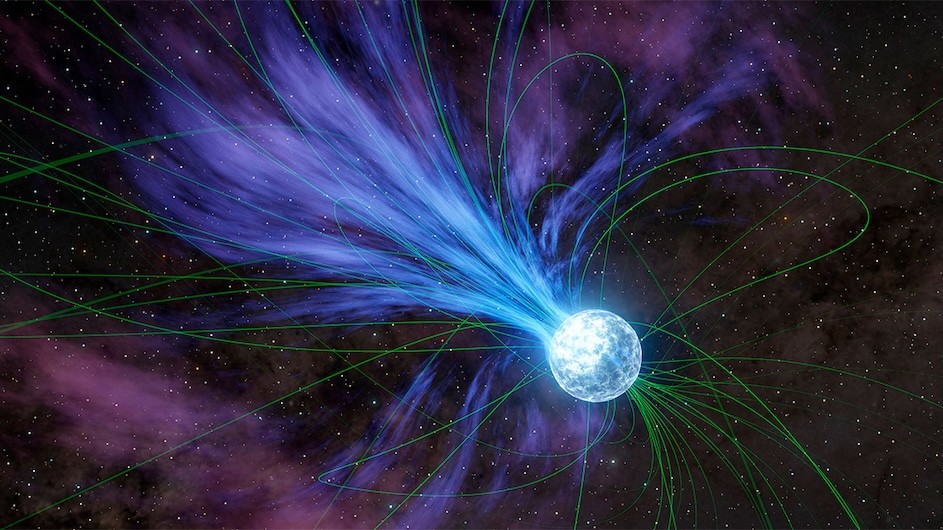2025-04-29 コロンビア大学

A visualization shows a giant flare erupting from a magnetized star called a magnetar. (NASA/JPL-Caltech)
<関連情報>
- https://news.columbia.edu/news/cosmic-explosion-forged-heavy-elements-gold-and-platinum
- https://iopscience.iop.org/article/10.3847/2041-8213/adc9b0
SGR1806-20マグネター巨大フレアからのMeV遅延放出におけるr過程核合成の直接的証拠 Direct Evidence for r-process Nucleosynthesis in Delayed MeV Emission from the SGR 1806–20 Magnetar Giant Flare
Anirudh Patel, Brian D. Metzger, Jakub Cehula, Eric Burns, Jared A. Goldberg, and Todd A. Thompson
The Astrophysical Journal Letters Published: 2025 April 29
DOI:10.3847/2041-8213/adc9b0
Abstract
The origin of heavy elements synthesized through the rapid neutron capture process (r-process) has been an enduring mystery for over half a century. J. Cehula et al. recently showed that magnetar giant flares, among the brightest transients ever observed, can shock heat and eject neutron star crustal material at high velocity, achieving the requisite conditions for an r-process. A. Patel et al. confirmed an r-process in these ejecta using detailed nucleosynthesis calculations. Radioactive decay of the freshly synthesized nuclei releases a forest of gamma-ray lines, Doppler broadened by the high ejecta velocities v ≳ 0.1c into a quasi-continuous spectrum peaking around 1 MeV. Here, we show that the predicted emission properties (light curve, fluence, and spectrum) match a previously unexplained hard gamma-ray signal seen in the aftermath of the famous 2004 December giant flare from the magnetar SGR 1806–20. This MeV emission component, rising to peak around 10 minutes after the initial spike before decaying away over the next few hours, is direct observational evidence for the synthesis of ∼10−6 M⊙ of r-process elements. The discovery of magnetar giant flares as confirmed r-process sites, contributing at least ∼1%–10% of the total Galactic abundances, has implications for the Galactic chemical evolution, especially at the earliest epochs probed by low-metallicity stars. It also implicates magnetars as potentially dominant sources of heavy cosmic rays. Characterization of the r-process emission from giant flares by resolving decay line features offers a compelling science case for NASA’s forthcoming COSI nuclear spectrometer, as well as next-generation MeV telescope missions.



